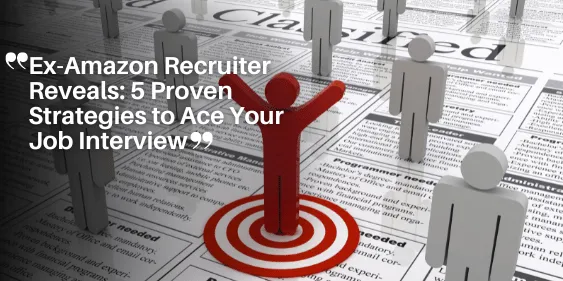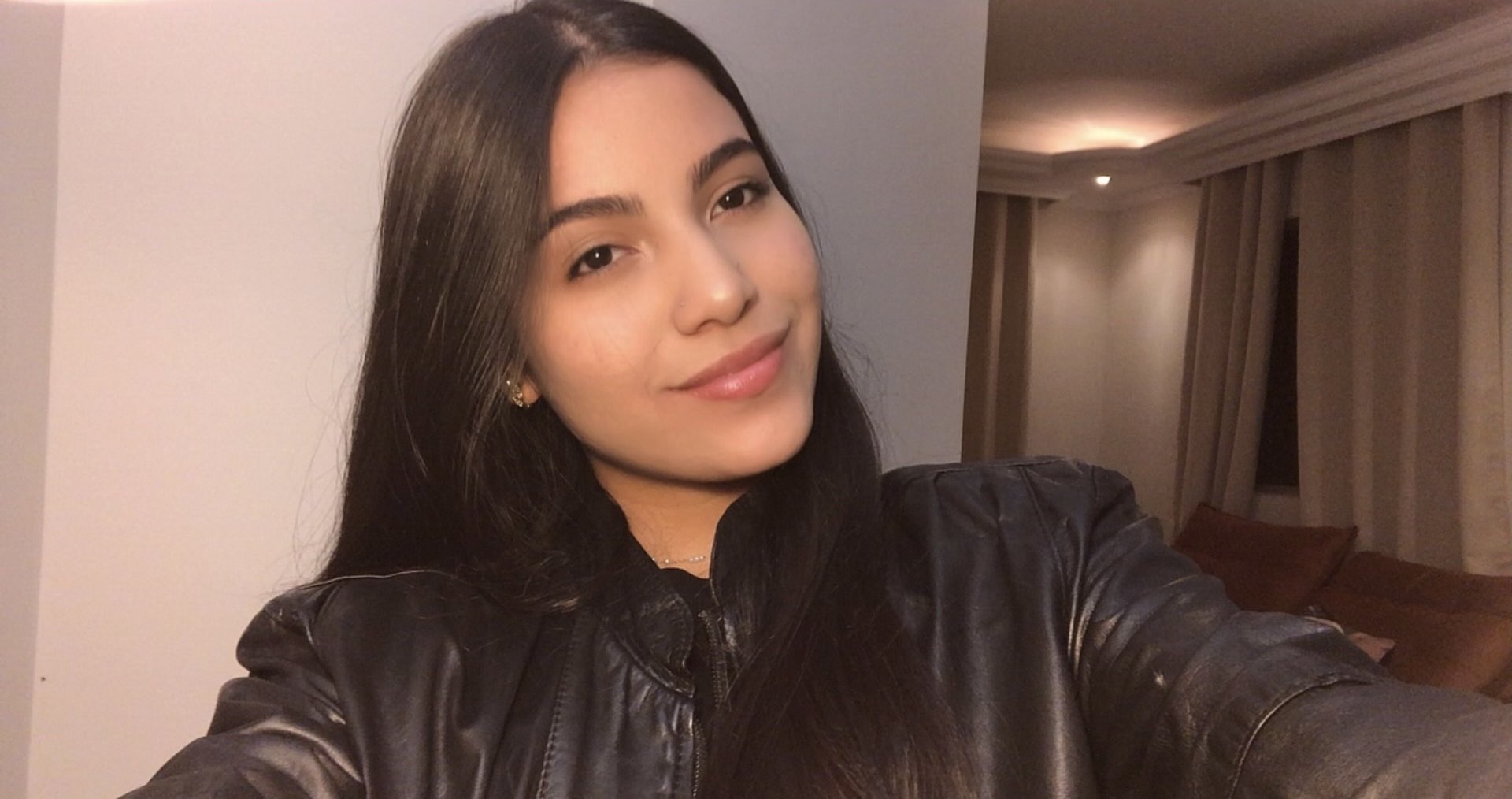Ex-Amazon Recruiter Reveals: 5 Proven Strategies to Ace Your Job Interview

Why Generic Statements Fall Short in Interviews
Generic statements in interviews are like empty calories—seemingly substantial but lacking the real nutritional value that interviewers crave.
When candidates state, “I’m a great leader” or “I work well under pressure,” they don’t provide the interviewer with any tangible evidence.
These statements are too vague to substantiate or visualize.
The absence of concrete proof makes it challenging for the interviewer to gauge your actual skills and effectiveness in a role.
How Concrete Examples Breathe Life into Your Skills
Picture this: instead of saying “I’m a strong team player,” you recount a time when you led a cross-functional team under a tight deadline, coordinated tasks effectively, and delivered the project ahead of schedule.
This narrative not only speaks to your teamwork but also illustrates your leadership, time management, and problem-solving abilities.
Concrete examples like these create a vivid picture, showcasing how you’ve applied your skills in real-world scenarios.
This makes it easier for interviewers to envision you in the role and understand the value you bring to the table.
The Impact of Storytelling on Interviewer Engagement
Storytelling has a profound effect on interviewer engagement.
When you weave your skills into a compelling story, you capture the interviewer’s attention and make your qualifications more memorable.
Detailed anecdotes can evoke emotions and make your experiences relatable.
By sharing specific instances where you overcame challenges or achieved significant milestones, you not only prove your competencies but also connect on a personal level. This rapport can be the edge you need in a competitive job market.
Specific examples elevate your interview responses from bland statements to dynamic narratives that demonstrate your qualifications convincingly.
As you hone your ability to tell compelling, relevant stories about your professional experiences, you’ll be better equipped to leave a lasting impression on your interviewers.
Next, we’ll explore a structured approach to crafting these impactful stories, ensuring that you present your examples in the most effective manner possible.
Mastering the STAR Method
Breaking Down the STAR Framework: Situation, Task, Action, Result
The STAR method is a proven framework to structure your interview responses with clarity and impact. Here’s the breakdown:
- Situation: Set the scene by briefly describing the context that led to the task. Be concise but informative, providing just enough background to make your story relatable.
- Task: Define the specific challenge or responsibility you had in that situation. This helps the interviewer understand your role.
- Action: Outline the specific steps you took to handle the task or overcome the challenge. Focus on what you did, not what the team did.
- Result: Conclude by explaining the outcome of your actions. Whenever possible, quantify your results to highlight the tangible impact of your efforts.
How to Structure Responses for Maximum Impact
Structuring your responses using the STAR method ensures that you present a well-rounded and compelling narrative. Here’s how to make it work for you:
- Be Concise: Stick to the essentials of the STAR method without veering into unnecessary details. Brevity keeps your story engaging.
- Be Specific: Provide concrete examples and avoid vague statements. This adds authenticity and credibility to your narrative.
- Be Relevant: Always relate your story back to the job requirements and the company’s culture. This demonstrates your alignment with the prospective employer’s needs and values.
Tips for Starting with the Result to Capture Attention
While the STAR method is highly effective, there’s a strategic twist you can use to grab attention right from the start—begin with the result. Here’s how you can do it:
- Lead with Impact: “Last quarter, I increased sales by 20%.” Starting with your result immediately showcases your success.
- Backtrack to the Situation: After capturing attention with the outcome, return to setting the scene and detailing the task and actions.
- Contextualize Your Achievement: Explain the efforts and strategies that led to your impressive result. This keeps the interviewer hooked and emphasizes your problem-solving skills.
By mastering and deploying the STAR method in your responses, you not only tell compelling stories but also demonstrate your capability and potential in a structured, impactful manner. This preparation sets you up for success and ensures your interview stories stand out.
Selecting Relevant Examples
Aligning Anecdotes with Job Requirements and Company Culture
When choosing examples for your job interview, it’s crucial to align your anecdotes with the specific requirements mentioned in the job description and the company culture. This alignment shows that you understand the role and its demands, and it demonstrates your suitability for the organization.
To do this effectively, start by thoroughly reviewing the job description. Identify key skills and experiences that the employer is looking for. Then, match these requirements with your past experiences. By doing this, you’re not just saying that you have the skills; you’re proving it with concrete examples.
Company culture is another critical aspect to consider. Research the company’s values and mission through their website and any available resources. Tailor your stories to reflect these values, showing that you’re not only qualified but also a cultural fit.
The Dangers of Using Irrelevant Examples
Using examples that are not relevant to the job can derail your interview. Irrelevant anecdotes can confuse the interviewer and raise doubts about your qualifications. This can make you appear unprepared or, worse, unsuitable for the position.
An irrelevant example can also break the flow of the interview, making it difficult for the interviewer to connect your past experiences with the role you’re applying for. This disconnect can lead to missed opportunities to showcase your strengths and expertise.
To avoid this pitfall, always ask yourself: “Does this example directly relate to the job I’m applying for?” If the answer is no, reconsider using it. Focus on stories that highlight relevant skills and experiences.
Tailoring Narratives to Showcase Company Value Alignment
Tailoring your narratives to align with the company’s values can significantly enhance your candidacy. This personalized approach shows that you’ve taken the time to understand the company’s mission and goals.
For instance, if a company values innovation, share a story about a time you introduced a new idea or improved a process in your previous role. If teamwork is a core value, highlight experiences where you successfully collaborated with others to achieve a common goal.
This strategy not only strengthens your responses but also demonstrates your commitment to the organization’s objectives. By doing so, you can make a meaningful connection with your interviewer, enhancing their perception of your fit for the role.
By aligning your examples with job requirements and company culture, you can make a compelling case for your suitability. Avoid irrelevant anecdotes and tailor your narratives to reflect company values for a stronger impact during your interview.
With these tactics, you can move forward confidently, ready to tackle other crucial aspects of interview preparation.
Preparation Beyond Examples
Thorough Company Research
Doing your homework on the company before the interview is non-negotiable.
Comprehensive research helps you understand the company’s culture, values, and the role you’re applying for, making it easier to align your responses with their expectations. Visit the company’s website to read about their mission, vision, and recent news.
Dive into their social media channels and employee reviews on sites like Linkedİn and Glassdoor for a well-rounded perspective.
By putting in the effort to understand the company, you not only present yourself as well-prepared but also demonstrate genuine interest and enthusiasm.
Practicing Responses Out Loud and Seeking Feedback
It’s one thing to think about your responses and another to actually say them out loud. Practice your answers to common interview questions, ideally using the STAR method. Articulate your stories with clarity and confidence.
Record yourself or practice in front of a mirror, then review your performance.
Better yet, seek feedback from trusted friends, colleagues, or mentors.
Constructive criticism is invaluable in refining your answers and delivery, making you more polished and poised during the actual interview.
Preparing Insightful Questions for the Interviewer
At the end of nearly every interview, you’ll be asked if you have any questions.
This is a golden opportunity to showcase your curiosity and engagement.
Prepare a list of insightful questions that reflect your research and enthusiasm for the role.
Focus on questions that delve into the company culture, team dynamics, or growth opportunities.
Avoid questions with straightforward answers easily found on the company’s website. For example, you might ask, “Can you share more about the team I’d be working with and how this role contributes to the company’s overall goals?”
Thoughtful questions like this demonstrate that you’re not just interested in the job but in becoming a valuable member of the company.
Thorough preparation goes beyond rehearsing examples. It involves understanding the company’s essence and practicing your responses to ensure you’re at your best.
By showing that you’ve done your homework and are genuinely interested, you elevate your candidacy to new heights.
Post-Interview Success Strategies
The Significance of Following Up After the Interview
Immediately following an interview, it’s crucial to maintain your professionalism and keep the momentum going.
Sending a thoughtful and concise thank you email within 24 hours is a powerful gesture that reflects your appreciation for the opportunity.
This simple act not only showcases your manners but also reinforces your interest in the position and helps you stay fresh in the interviewer’s mind.
In your follow-up, briefly mention a highlight from the interview and reiterate your enthusiasm for the role.
Thank them for their time and express your eagerness to explore how you can contribute to the team.
This is an excellent opportunity to subtly remind them of your qualifications and how you align with the company’s objectives.
Demonstrating Continued Interest and Professionalism
Maintaining consistent communication even after the interview demonstrates your genuine interest in the role.
This could involve following up with any additional materials that were requested, updating the interviewer on new relevant accomplishments, or simply staying in touch via LinkedIn.
Avoid being overly persistent, as this can come off as desperate.
One or two well-timed messages are usually sufficient to convey your keen interest.
Your goal is to keep building a positive and professional impression.
By balancing persistence with patience, you highlight your eagerness and respect for the company’s time and hiring process.
Leveraging the Interview Experience for Future Opportunities
Each interview is a learning opportunity, regardless of the outcome. Reflect on your performance and identify areas for improvement.
Did you stumble on any questions? Was there a particular topic that seemed to resonate well with the interviewer?
Use this feedback to hone your skills for future interviews.
Seeking feedback from the interviewer, if appropriate, can also be valuable. Ask for constructive criticism, which can provide insights that are critical for your growth. Additionally, document your key takeaways, successful responses, and areas that need refining. This evolving script will become your personal toolkit for acing future interviews.
Incorporating these post-interview strategies not only increases your chances of securing the job but also positions you as a diligent and reflective candidate, ready to seize future opportunities with enhanced confidence and insight.
By following these steps, you solidify a strong, lasting impression that distinguishes you from other candidates, making you a memorable contender for any role you aspire to.







